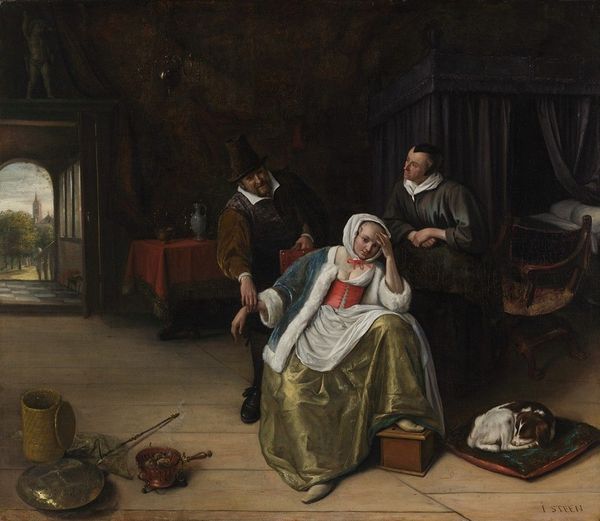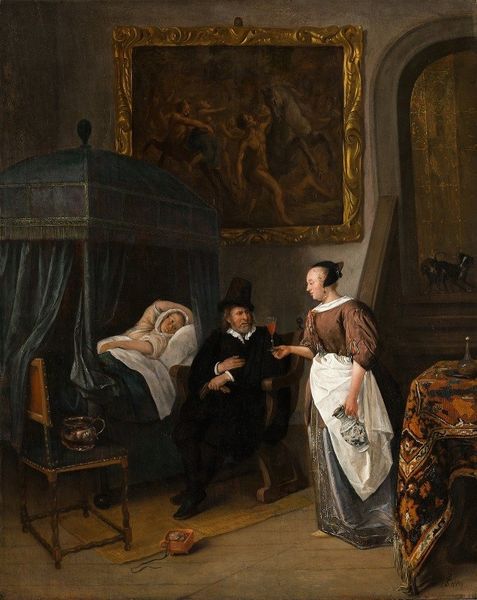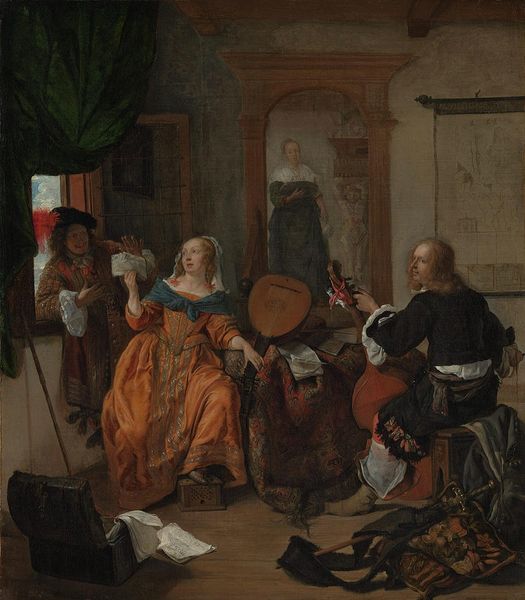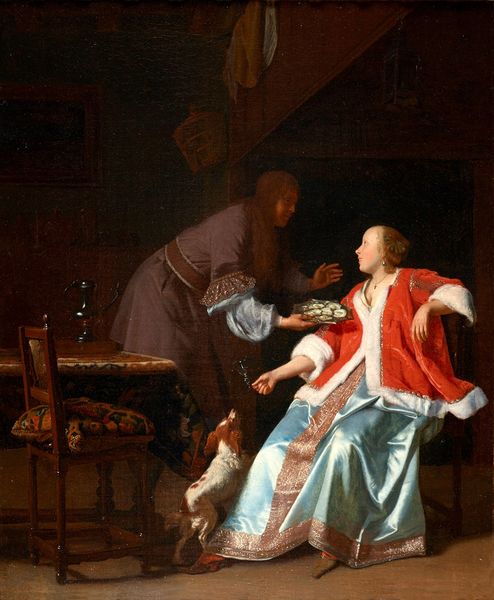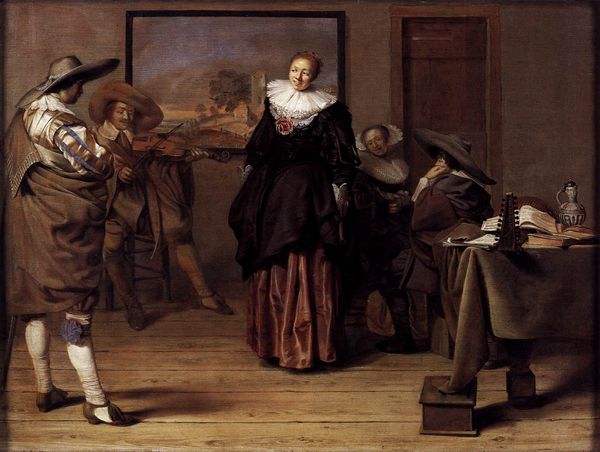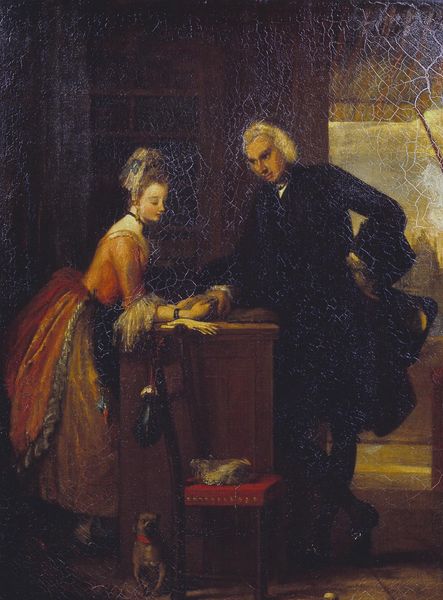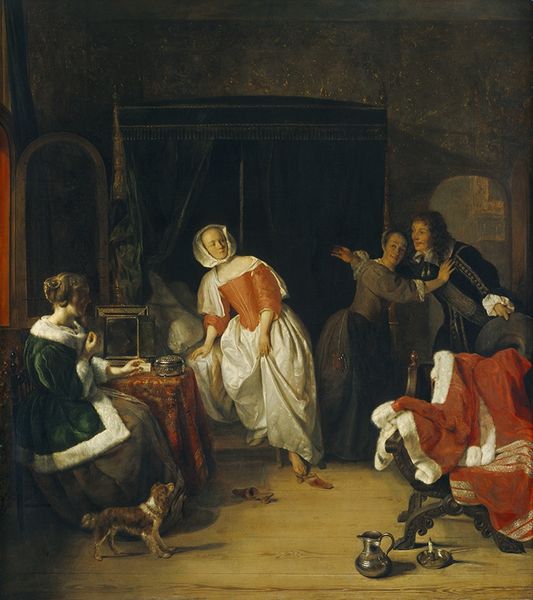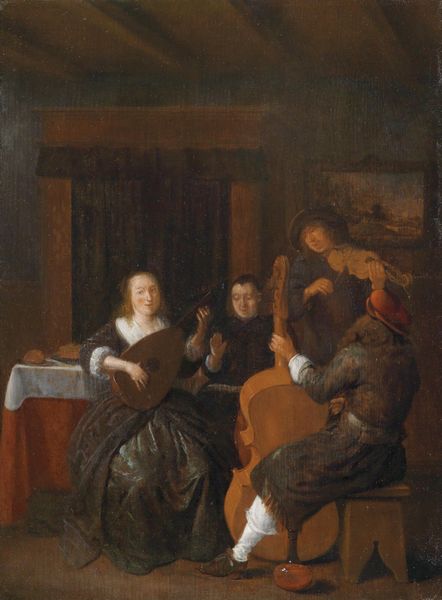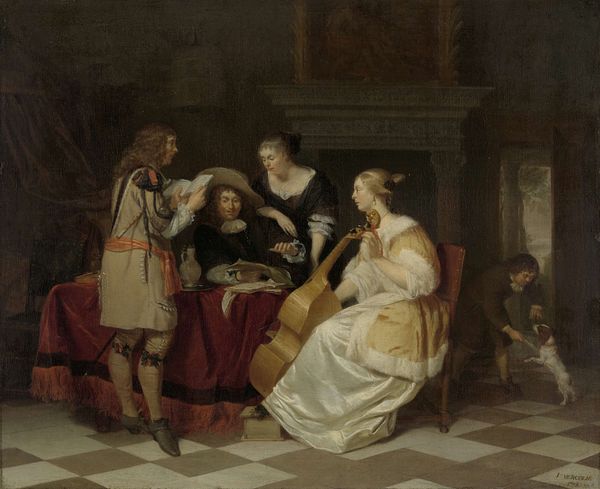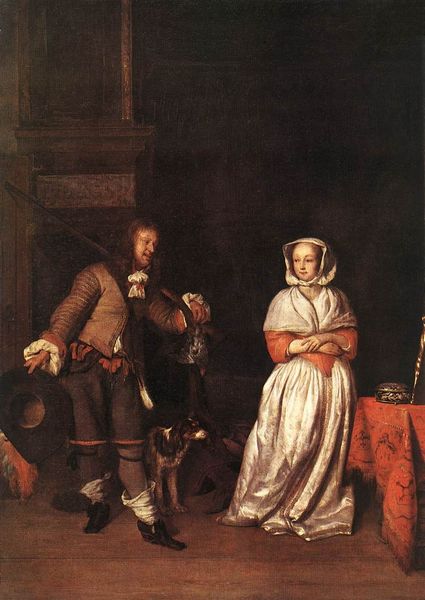
oil-paint
portrait
figurative
dutch-golden-age
oil-paint
oil painting
underpainting
genre-painting
Copyright: Public Domain: Artvee
Curator: Jan Steen's painting, "The Sick Girl," painted around 1660, is quite striking. The textures in this domestic scene are palpable. Editor: There is a somber air that pervades this interior scene; though the fabrics have a luxurious feel, this cannot dispel an unsettling quiet. What do you read from the symbolism within the painting? Curator: Jan Steen was, after all, painting within a specific context. In the Dutch Golden Age, medical practitioners, quacks, and apothecaries had a very public role in ordinary lives, both in life and in art. Their impact cannot be separated from the experience of that time, though not always flattering. Editor: Note that Steen positions several figures, each potentially representing elements tied to her condition, a dog being among them, usually a signifier of fidelity and affection, yet also tied to canine diseases. Even in an interior, such imagery carried very loaded meanings in the culture of the time. Curator: Certainly! Dogs appear frequently in art, in myriad roles, sometimes pointing to wealth and status, but here perhaps emphasizing a more relatable role and comfort through difficult times. It humanizes the emotional landscape of the work, especially tied to themes that often deal with a range of patient emotions, perhaps anxieties, helplessness. Editor: It also brings us to considering more intimate aspects tied to medical history and societal values, as seen through the iconography of each character; these types of domestic paintings really allow one to step back in time. Curator: They truly serve as cultural artifacts, enabling us to reevaluate societal beliefs about health, sickness, and their representation throughout time. I’ve come to appreciate how his narrative complexity makes his works quite resonant for contemporary viewers. Editor: It makes us more attuned to reading symbols that were commonplace once upon a time.
Comments
No comments
Be the first to comment and join the conversation on the ultimate creative platform.

